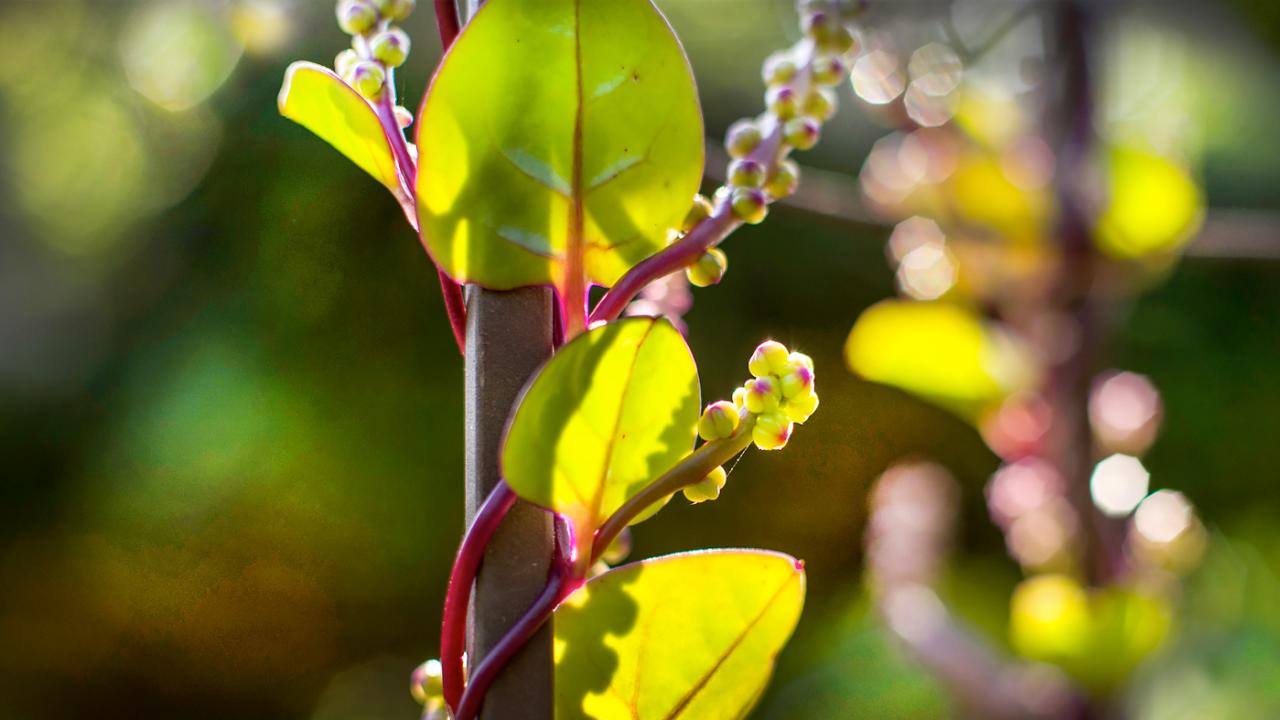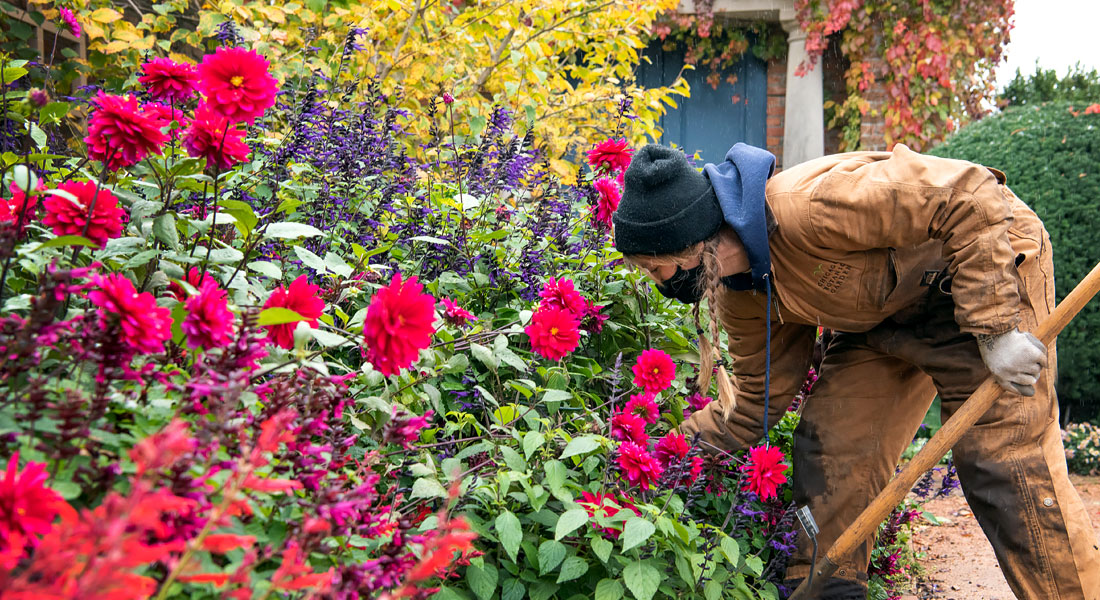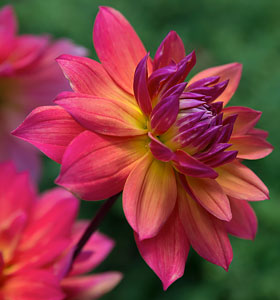

Plants & Gardening
Garden Stories
Fall in love with dahlias—again and again
The gorgeous colors and geometry of dahlias always turn my head when they’re in bloom in my home garden from June through October. Recently, I decided to revisit an old goal and bugaboo of mine—learning to overwinter the tubers so I can plant them again and enjoy the blooms next year.


 |
 |
Sarah Nolimal, assistant horticulturist, dug up some dahlias in the English Walled Garden to show us the process. Note that you should wait until a hard frost before digging them up for storage.
Dahlias, which grow from small tubers planted in the spring, are one of my favorite annuals. You might have seen them this summer at the Chicago Botanic Garden in the Crescent Garden, Circle Garden, or Thomas English Walled Garden. Or maybe you’ve seen them at the Dahlia Show held by the Central States Dahlia Society. That’s where you can see the true diversity of the plant, which comes in a variety of colors and sizes.
In the past, I’ve tried overwintering them, but they dried up and shriveled into nothing. I carelessly stored them in a cardboard box with crumpled newspapers in an unheated, detached garage—in a polar vortex year, no less. This year, I turned to some Garden experts for step-by-step detailed instructions.
Below are a few tips from Tim Johnson, the Garden’s senior director of horticulture:
- In late fall, after frosts have blackened the plants' foliage, very carefully dig up the tubers. To avoid injury to the tubers, use a lifting motion with a pitchfork or potato fork rather than digging with a shovel.
- Start digging a few inches away from the base and angle under it before beginning to lift it out of the ground. Leave a few inches of stalk attached to the tuber, but sift off most of the dirt and trim back the roots.
- Hang upside down to dry before cutting off the stalk, and store in boxes lined with newspaper, slightly damp sawdust, wood shavings, or peat moss. Check monthly for signs of shriveling (sprinkle with a touch of water), blackening, or softening (throw out).”
- Store the tubers in a dark, dry room, where temperatures ideally range from 40 to 50 degrees Fahrenheit.
I also turned to a Garden expert with hands-on experience with doing this at home. Boyce Tankersley, director of living plant documentation, has successfully stored dahlia tubers in an unfinished basement. A couple years ago, he hosted his daughter’s wedding in his garden, and he wanted to save the dahlias he had planted for the wedding to keep the happy memories alive.
Here’s some advice from Boyce Tankersley, director of living plant documentation:

Use a shovel, but start farther away from the plant.
“I dig a circle around the plant, gently lifting the soil with each spade and gently seeing if the plant with tubers will come out of the ground. If it doesn’t—and I have heavy soil—I move in a little closer to the plant and repeat the process.”
Never separate the tubers.
“There are ‘hard to see’ dormant buds up in the area where all of the tubers come together—a tuber without one of those buds does not sprout the following year.”
Don’t remove the soil from the tubers.
“In the past, my tubers either got too dry (most often) or rotted (when I dampened them too much) if I cleaned them thoroughly of soil before storing. My solution is to leave soil around the tubers (whatever sticks there) and place them in a paper grocery sack.”
There are many ways to store them.
“Cardboard or paper that allows air movement/moisture is better than plastic or non-porous containers. I like the cedar bedding sold by pet stores in small bales. It doesn’t blow around as much as packing peanuts and smells good as well. If the paper/cardboard containers are showing signs of moisture, then your tubers are too wet.”
Don’t let them get too cold.
“The one winter I tried to overwinter them in an unheated (yet attached) garage was not successful.”
Revive them under grow lights in spring.
“If I leave soil on the tubers, they stay in the paper sack until mid-April. At that time, I move the whole clump, soil and all, underneath grow lights. At that point, I start to gently add a little water to the soil mass to ‘wake up’ the dormant buds. Usually they have sprouted and are ready to move outdoors toward the end of May.”
Now that I have my marching orders, I can’t wait to see what happens come spring!
More Information
Crescent Garden
Circle Garden
English Walled Garden
List of Dahlia Species
Posts Featuring Dahlias


